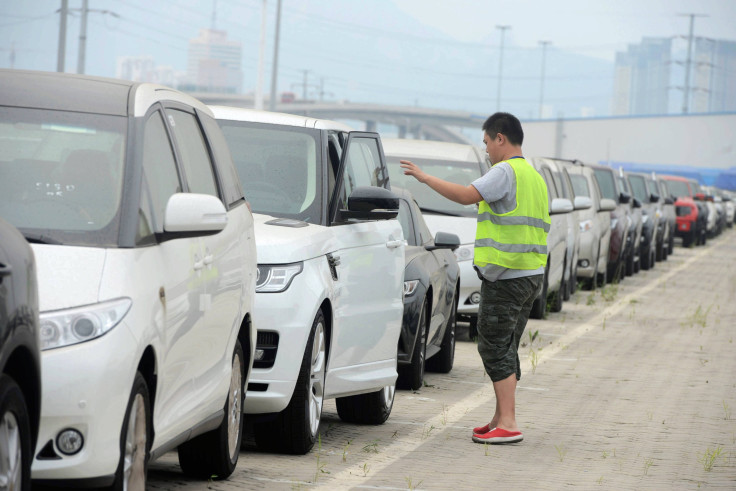China’s Slowdown Could See Automakers Slowing Factory Construction Or Exporting Excess Cars From China

Just as global automakers begin upping the number of cars they’re producing in China, the world’s largest auto market is losing momentum as the country’s economic growth slows to a pace unseen in more than 20 years. And now that automakers are about to increase their production capacities by millions of cars over the next year, the question is how will they adjust to the downturn.
“In 2010 we saw massive capacity increases in pretty much every industry in China,” said Steven Szakaly, chief economist for the National Automobile Dealers Association, a U.S. trade group. “But by 2012 it was starting to become clear that China was underutilizing this buildup, and now we’re seeing the deep economic adjustments in China that automakers are confronting.”
China’s car sales plummeted 7.1 percent last month, a 17-year low, and sales barely grew in the first seven months of the year, by 0.4 percent, according to the China Association of Automobile Manufacturers (CAAM). Annual growth would be lucky to hit the CAAM’s 3 percent forecast this year, which would be less than half the growth in China new-auto sales in 2014. This doesn’t bode well for an industry that has become so reliant on China, which bought a fourth of the world’s new cars and SUVs last year.
Over the past year alone, major global car companies have either opened or broken ground on new factories.
In May, Volkswagen Group, the largest foreign car company in the Chinese market, opened its new $194 million factory in Changsha with its local partner SAIC Motor, China’s largest carmaker. Ford Motor’s $760 million plant in Hangzhou, Ford’s sixth Chinese factory, just went online in March to build the Ford Edge crossover under partnership with Changan Automobile. General Motors and SAIC are about to begin making Cadillacs while Renault, Peugeot, Hyundai and Fiat Chrysler all have expansion plans in the works. Even Tesla Motors, a tiny automaker with immense growth plans, is depending heavily on near-term Chinese demand for its six-figure luxury electric cars.
After 16 years of high-pace growth in China, the situation has turned “grim” in 2015, SAIC said last week in its earning statement, echoing sentiments across the industry that has become so reliant on China while other world markets like Europe and Brazil have been faltering.

“There’s not an auto company that’s not having these discussions as we speak,” John Hoffecker, a vice chairman at consulting firm AlixPartners, told Automotive News. “How long does this downturn last, and is it sustained? What will happen to pricing and will it come back? How long will the yuan stay down? Do we cut capacity?”
Cutting capacity – that is to say cutting jobs and slowing or closing factories – is certainly an option, but by how much is the question. Industry watchers and automakers know that in the long term China will continue to be one of the world’s most important automotive markets.
Another possibility is to export the extra capacity, especially to other destinations in Asia.
“The global automakers could certainly do that because the quality of the product coming out of China is suitable for other markets,” said John Humphrey, senior vice president of global automotive operations at J.D. Power and Associates. “They could go ahead and export vehicles from China, and right now there’s very little of that going on.”
Already car companies have been positioning China to become a major Eastern manufacturing base after carefully cultivating partnerships with local manufacturers. GM wants to export Chevrolet Sail compacts to South America while Ford is planning to send the Edge from China to other Asian markets, and even the U.S.
But replying on exports from China to help absorb excess car-making depends on how deeply and widely China’s downturn will impact other markets. If Chinese buyers dip into a prolonged period of low new-car demand, the same could happen in other markets in Asia and elsewhere. And already-plunging commodities prices spurred by China’s curbed appetite and a flight of investments out of emerging markets are slowing economic activity across Asia and elsewhere. If cars aren’t selling in China, they might not sell in Indonesia or the Philippines either.
© Copyright IBTimes 2025. All rights reserved.






















